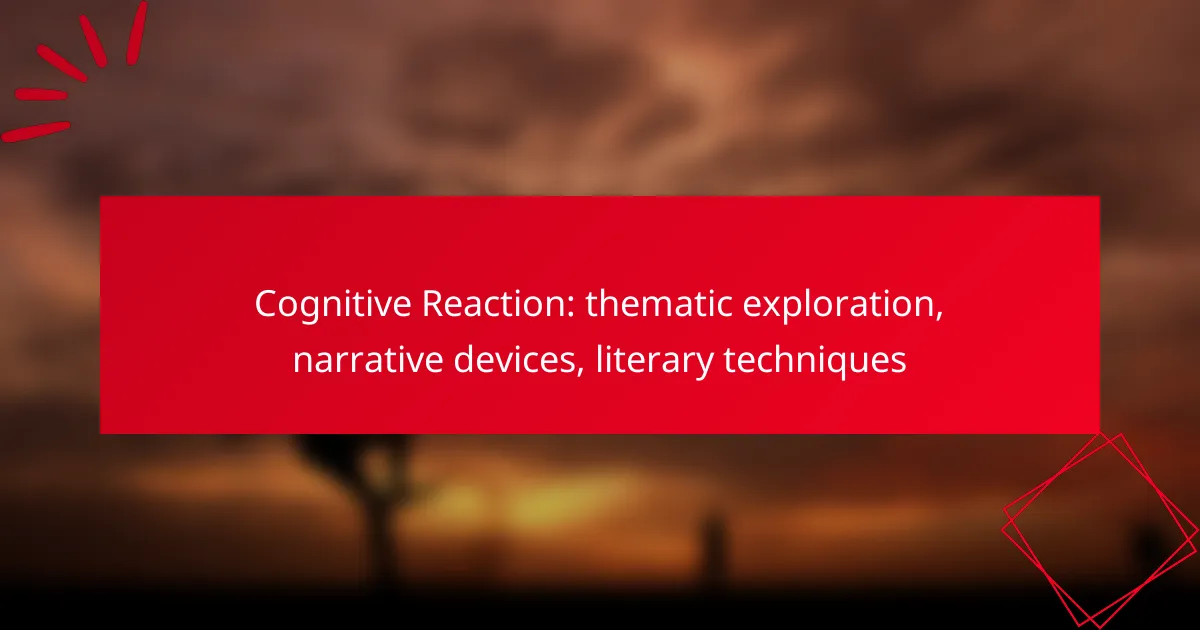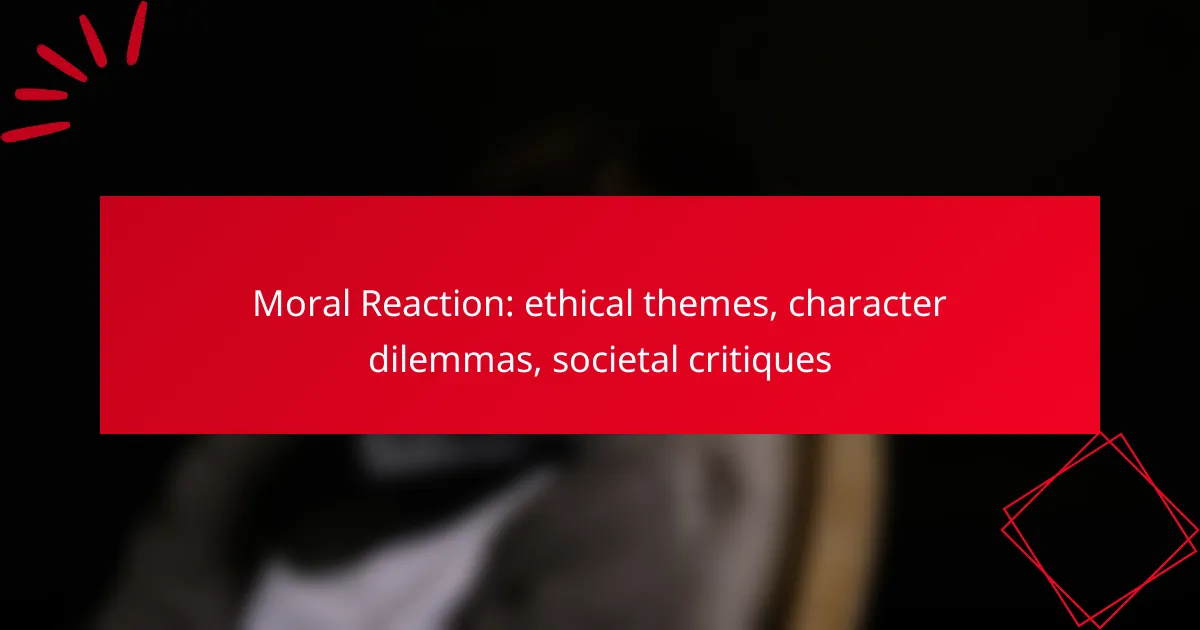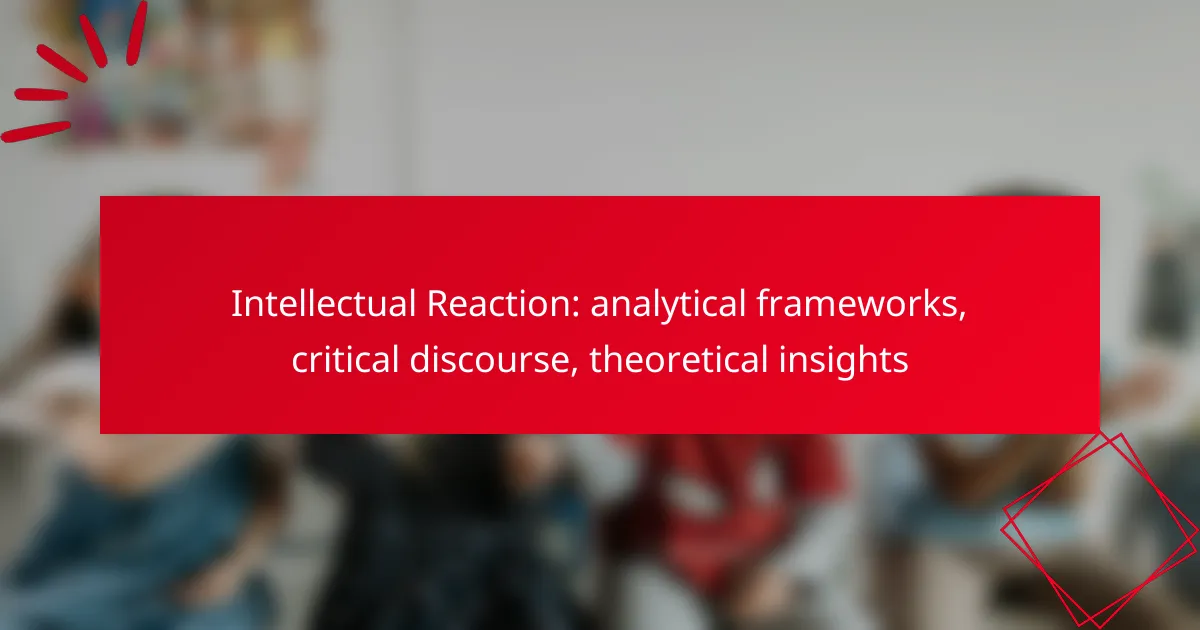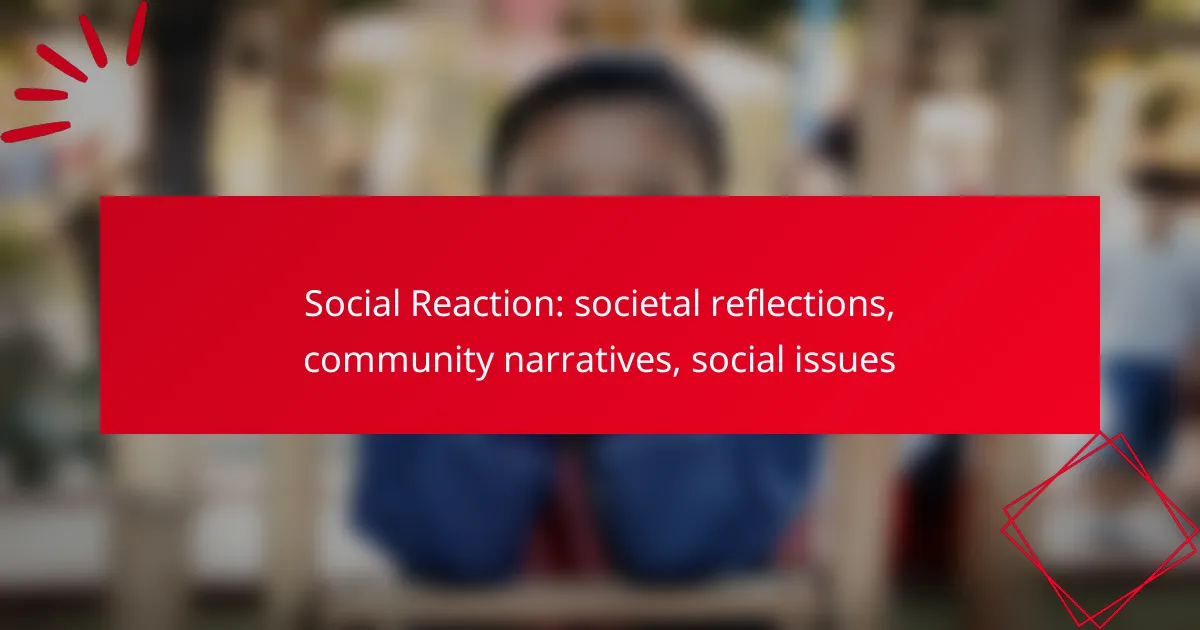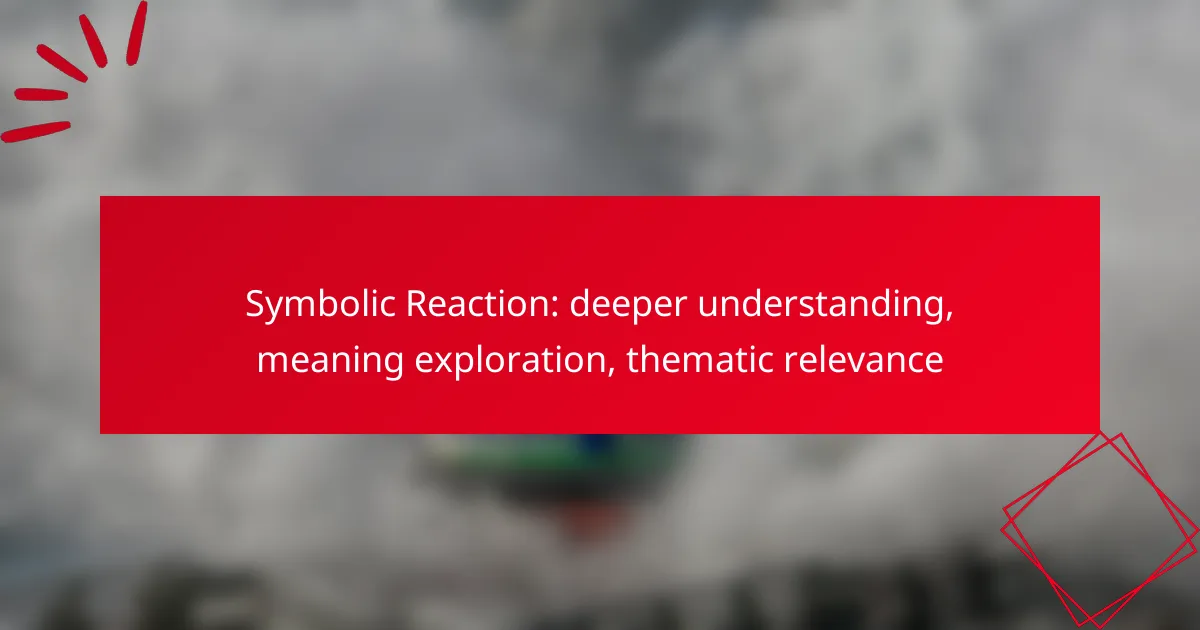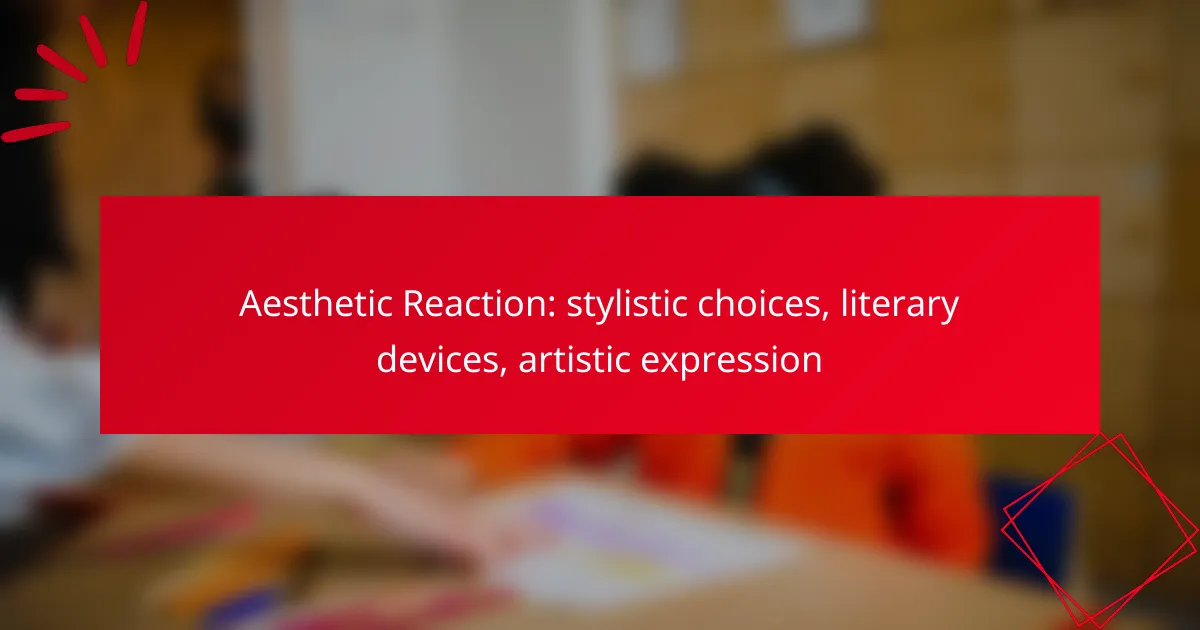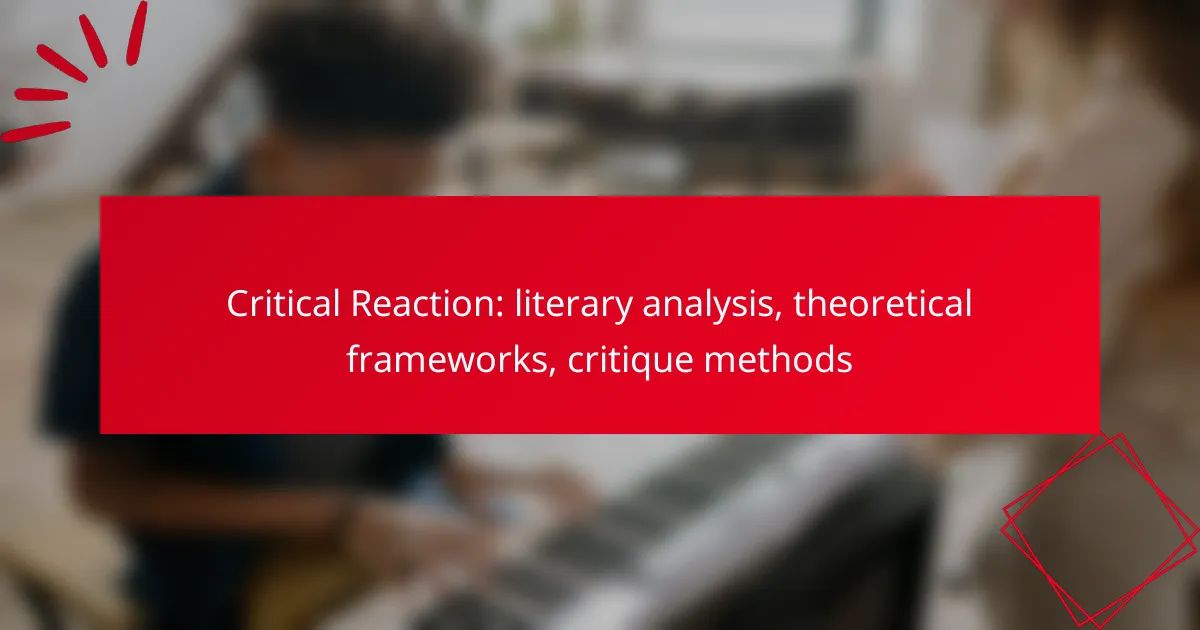How to Analyze Novel Reactions in Australian Literature?
To analyze novel reactions in Australian literature, focus on understanding the cultural and social contexts that shape characters and narratives. This involves examining themes, character arcs, narrative structures, and applying relevant literary criticism frameworks.
Identify key themes and motifs
Start by pinpointing the central themes and motifs that recur throughout the novel. Common themes in Australian literature include identity, isolation, and the relationship with nature. Look for symbols or recurring images that reinforce these themes, such as the outback or urban landscapes.
Consider how these themes reflect broader societal issues in Australia, such as colonial history or Indigenous perspectives. This contextual understanding can deepen your analysis and reveal the author’s intent.
Examine character development
Character development is crucial in understanding reactions within the narrative. Analyze how characters evolve in response to their environments and experiences. Look for transformations that highlight personal struggles or societal pressures, which are often prominent in Australian literature.
Pay attention to the relationships between characters, as these interactions can reveal underlying themes and conflicts. Consider how the setting influences character choices and growth, providing insight into their motivations and reactions.
Explore narrative structure
The narrative structure shapes how a story unfolds and influences reader reactions. Examine whether the novel follows a linear progression or employs flashbacks and multiple perspectives. This can affect how themes and character developments are perceived.
Consider the pacing of the narrative and how it builds tension or resolves conflicts. A well-structured narrative can enhance emotional impact and guide readers through complex themes and character arcs.
Utilize literary criticism frameworks
Applying literary criticism frameworks can provide structured insights into the text. Consider approaches such as post-colonial criticism, which is particularly relevant in Australian literature, to explore themes of identity and power dynamics.
Feminist or ecological criticism can also be beneficial, depending on the novel’s focus. Use these frameworks to analyze how the text engages with social issues and cultural narratives, enriching your overall interpretation.
What are the common reactions in contemporary Australian novels?
Contemporary Australian novels often evoke a range of reactions from readers, reflecting societal issues, personal conflicts, and cultural identity. These reactions can be emotional, intellectual, or reflective, providing insight into the complexities of modern Australian life.
Emotional responses to social issues
Many Australian novels tackle pressing social issues such as inequality, climate change, and indigenous rights, eliciting strong emotional reactions from readers. For example, novels that depict the struggles of marginalized communities often provoke empathy and a sense of urgency for social justice.
Writers may use vivid imagery and personal narratives to highlight these issues, making them relatable and impactful. Readers might find themselves moved to action or deep contemplation after engaging with these themes.
Character-driven conflicts
Character-driven conflicts are central to many contemporary Australian narratives, often reflecting broader societal tensions. These conflicts can arise from personal dilemmas, family dynamics, or cultural clashes, providing a rich ground for emotional exploration.
For instance, a character’s struggle with their identity may mirror the societal challenges faced by their community, creating a layered narrative that resonates with readers. This approach allows for a deeper understanding of both individual and collective experiences.
Responses to cultural identity
Contemporary Australian novels frequently explore themes of cultural identity, particularly in a multicultural society. Characters may grapple with their heritage and the expectations placed upon them, leading to a complex interplay of belonging and alienation.
These narratives often highlight the diversity within Australia, showcasing various cultural backgrounds and their influence on personal identity. Readers are encouraged to reflect on their own cultural experiences and the ways in which identity shapes perspectives and interactions.
Which tools can assist in literary analysis?
Various tools can enhance literary analysis by providing resources for deeper understanding and interpretation. These tools include software for analysis, online databases for criticism, and annotation tools that facilitate text engagement.
Literary analysis software
Literary analysis software helps users dissect texts through various features like text comparison, thematic analysis, and character mapping. Programs such as Voyant Tools and Literary Analysis Toolkit allow for visual representation of data, making complex relationships easier to understand.
When choosing software, consider compatibility with your operating system and whether it supports the specific types of analysis you need. Many tools offer free versions, while advanced features may require a subscription or one-time purchase.
Online databases for literary criticism
Online databases like JSTOR and Project MUSE provide access to a wealth of literary criticism and scholarly articles. These platforms are invaluable for finding peer-reviewed research that can support your analysis and provide different perspectives on a text.
Access to these databases may require a subscription or institutional login, so check if your library offers free access. Familiarize yourself with search functions to efficiently locate relevant articles and critiques.
Annotation tools for text analysis
Annotation tools such as Hypothesis and Adobe Acrobat Reader allow users to highlight, comment, and organize thoughts directly on texts. These tools facilitate active reading and help in tracking insights and questions that arise during analysis.
When using annotation tools, focus on key themes, character development, and stylistic elements. Regularly review your annotations to deepen your understanding and prepare for discussions or written analyses.
What are the prerequisites for effective literary analysis?
Effective literary analysis requires a solid understanding of literary theory and familiarity with the specific cultural context of the literature being analyzed. These prerequisites enable readers to interpret texts more deeply and appreciate their nuances.
Understanding literary theory
Literary theory provides the framework for analyzing texts through various lenses, such as formalism, structuralism, post-colonialism, and feminism. Each theory offers distinct tools and perspectives that can uncover different meanings and themes within a work.
When approaching a text, consider which literary theory aligns best with your analysis goals. For example, using a feminist lens may highlight gender dynamics, while a structuralist approach could focus on narrative structure and language patterns.
Familiarity with Australian literary context
Understanding the Australian literary context is crucial for analyzing works by Australian authors. This includes knowledge of historical, social, and cultural factors that influence literature in Australia, such as Indigenous perspectives, colonial history, and contemporary issues.
To effectively analyze Australian literature, familiarize yourself with key authors, movements, and themes. For instance, exploring the works of writers like Patrick White or Tim Winton can provide insight into the unique challenges and narratives present in Australian literature.
How to compare reactions across different genres?
To compare reactions across different genres, focus on the unique conventions and expectations that shape how audiences engage with each genre. Understanding these elements allows for a more nuanced analysis of reader responses and emotional engagement.
Identify genre-specific conventions
Each literary genre has its own set of conventions that influence how reactions are formed. For instance, in romance novels, readers often expect emotional resolutions and character development, while in horror, the anticipation of fear and suspense is paramount. Recognizing these conventions helps in assessing how effectively a work meets or subverts audience expectations.
Consider creating a comparison chart that outlines key conventions for various genres. This can include elements like tone, pacing, and character archetypes, which can significantly impact reader reactions.
Analyze reader expectations
Reader expectations vary widely between genres and can dictate the emotional journey of a narrative. For example, a mystery novel typically builds suspense and requires readers to piece together clues, while a fantasy might focus on world-building and adventure. Understanding these expectations is crucial for analyzing how effectively a story resonates with its audience.
To gauge reader expectations, consider conducting surveys or reading reviews to see what elements resonate most with audiences in different genres. This feedback can provide valuable insights into how reactions differ and what factors contribute to a successful narrative.
What emerging trends are shaping literary reactions in Australia?
Emerging trends in Australia are increasingly influenced by diverse voices and digital platforms. The rise of social media and self-publishing has allowed for a broader range of narratives and reactions to be shared and discussed among readers.
Increased representation of marginalized voices
There is a growing focus on amplifying the voices of Indigenous authors and those from multicultural backgrounds. This trend reflects a broader societal shift towards inclusivity and recognition of diverse experiences in literature.
Readers are now more likely to seek out works that reflect a variety of perspectives, leading to a richer literary landscape. This shift encourages publishers to prioritize diverse authors and stories in their catalogs.
Impact of digital platforms
Digital platforms have transformed how literature is consumed and discussed in Australia. E-books, audiobooks, and online literary communities facilitate access to a wider array of works, enabling readers to engage with literature in new ways.
Social media platforms allow for immediate reactions and discussions about literary works, fostering a dynamic dialogue between authors and readers. This interaction can influence trends and shape future literary productions.
Shift towards genre-blending
Australian literature is increasingly characterized by genre-blending, where authors combine elements from different genres to create unique narratives. This trend reflects a desire for innovation and experimentation in storytelling.
Readers are drawn to these hybrid works, which often challenge traditional genre boundaries and offer fresh perspectives. This shift encourages writers to explore new formats and styles, contributing to a vibrant literary scene.

